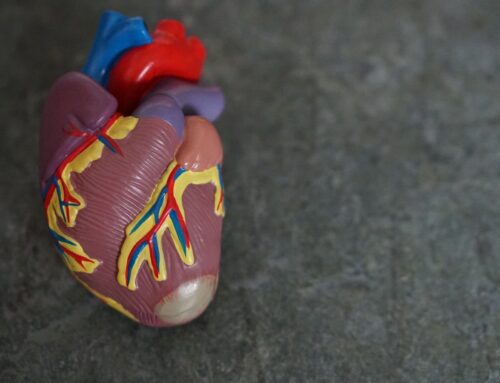- Lamberg, B. (1991). Endemic goitre—iodine deficiency disorders. Annals of Medicine , 23 (4), 367-372. doi:10.3109/07853899109148075
- Baasanjav-Gerber, C., Hollnagel, H. M., Brauchmann, J., Iori, R., & Glatt, H. (2010). Detection of genotoxicants in Brassicales using endogenous DNA as a surrogate target and adducts determined by 32P-postlabelling as an experimental end point. Mutagenesis , 26 (3), 407-413. doi:10.1093/mutage/geq108
- Latté, K. P., Appel, K., & Lampen, A. (2011). Health benefits and possible risks of broccoli – An overview. Food and Chemical Toxicology , 49 (12), 3287-3309. doi:10.1016/j.fct.2011.08.019
- Socała, K., Nieoczym, D., Kowalczuk-Vasilev, E., Wyska, E., & Wlaź, P. (2017). Increased seizure susceptibility and other toxicity symptoms following acute sulforaphane treatment in mice. Toxicology and Applied Pharmacology , 326 , 43-53. doi:10.1016/j.taap.2017.04.010
- Engel et al. 1997. Lectin staining of renal tubules in normal kidney. Acta Pathologica, Microbiologica et Immunologica Scandinavica 105(1): 31–34
- Singh et al. 2006. Peanut lectin stimulates proliferation of colon cancer cells by interaction with glycosylated CD44v6 isoforms and consequential activation of c-Met and MAPK: functional implications for disease-associated glycosylation changes. Glycobiology 16(7): 594–601. Gabius, H-J., and Gabius, S. (Eds.) 1996. Glycosciences: Status & perspectives. Weinheim, Germany: Wiley-VCH.
- Crane, T. E., Kubota, C., West, J. L., Kroggel, M. A., Wertheim, B. C., & Thomson, C. A. (2011). Increasing the vegetable intake dose Is associated with a rise in plasma carotenoids without modifying oxidative stress or inflammation in overweight or obese postmenopausal women. The Journal of Nutrition , 141 (10), 1827-1833. doi:10.3945/jn.111.139659
- Smith, T. K., Mithen, R., & Johnson, I. T. (2003). Effects of Brassica vegetable juice on the induction of apoptosis and aberrant crypt foci in rat colonic mucosal crypts in vivo. Carcinogenesis , 24 (3), 491-495. doi:10.1093/carcin/24.3.491
- Lynn, A., Collins, A., Fuller, Z., Hillman, K., & Ratcliffe, B. (2006). Cruciferous vegetables and colo-rectal cancer. Proceedings of the Nutrition Society , 65 (1), 135-144. doi:10.1079/pns2005486
- Cordain, L. 2013. Are chia seeds permitted on the paleo diet? http://thepaleodiet.com/paleo-diet-special-report-chia-seeds/. Accessed 1/15/17.
- Baasanjav-Gerber, C., Hollnagel, H. M., Brauchmann, J., Iori, R., & Glatt, H. (2010). Detection of genotoxicants in Brassicales using endogenous DNA as a surrogate target and adducts determined by 32P-postlabelling as an experimental end point. Mutagenesis , 26 (3), 407-413. doi:10.1093/mutage/geq108
- Lynn, A., Fuller, Z., Collins, A. R., & Ratcliffe, B. (2015). Comparison of the effect of raw and blanched-frozen broccoli on DNA damage in colonocytes. Cell Biochemistry and Function , 33 (5), 266-276. doi:10.1002/cbf.3106
- Heres-Pulido, M. E., Dueñas-García, I., Castañeda-Partida, L., Santos-Cruz, L. F., Vega-Contreras, V., Rebollar-Vega, R., … Durán-Díaz, Á. (2010). Genotoxicity studies of organically grown broccoli (Brassica oleracea var. italica) and its interactions with urethane, methyl methanesulfonate and 4-nitroquinoline-1-oxide genotoxicity in the wing spot test of Drosophila melanogaster. Food and Chemical Toxicology , 48 (1), 120-128. doi:10.1016/j.fct.2009.09.027
- Sharma, R., Sharma, A., Chaudhary, P., Pearce, V., Vatsyayan, R., Singh, S. V., … Awasthi, Y. C. (2010). Role of lipid peroxidation in cellular responses to d,l-sulforaphane, a promising cancer chemopreventive agent. Biochemistry , 49 (14), 3191-3202. doi:10.1021/bi100104e
- Kassie, F., Parzefall, W., Musk, S., Johnson, I., Lamprecht, G., Sontag, G., & Knasmüller, S. (1996). Genotoxic effects of crude juices from Brassica vegetables and juices and extracts from phytopharmaceutical preparations and spices of cruciferous plants origin in bacterial and mammalian cells. Chemico-Biological Interactions , 102 (1), 1-16. doi:10.1016/0009-2797(96)03728-3
- Bajaj, J. K., Salwan, P., & Salwan, S. (2016). Various possible toxicants involved in thyroid dysfunction: A review. Journal of Clinical and Diagnostic Research . doi:10.7860/jcdr/2016/15195.7092
- Felker, P., Bunch, R., & Leung, A. M. (2016). Concentrations of thiocyanate and goitrin in human plasma, their precursor concentrations in brassica vegetables, and associated potential risk for hypothyroidism. Nutrition Reviews , 74 (4), 248-258. doi:10.1093/nutrit/nuv110
- Truong, T., Baron-Dubourdieu, D., Rougier, Y., & Guénel, P. (2010). Role of dietary iodine and cruciferous vegetables in thyroid cancer: a countrywide case–control study in New Caledonia. Cancer Causes & Control , 21 (8), 1183-1192. doi:10.1007/s10552-010-9545-2
- Chandra, A. K., & De, N. (2010). Goitrogenic/antithyroidal potential of green tea extract in relation to catechin in rats. Food and Chemical Toxicology , 48 (8-9), 2304-2311. doi:10.1016/j.fct.2010.05.064
- Chandra, A. K., & De, N. (2012). Catechin induced modulation in the activities of thyroid hormone synthesizing enzymes leading to hypothyroidism. Molecular and Cellular Biochemistry , 374 (1-2), 37-48. doi:10.1007/s11010-012-1503-8
- Patel, Satish & Nag, Mukesh Kumar & Daharwal, S.J. & Rawat Singh, Manju & Singh, Deependra. (2013). Plant toxins: An overview. Research J. Pharmacology and Pharmacodynamics . 5. 283-288.
- National Research Council. 1973. Toxicants occurring naturally in foods . Washington, DC: The National Academies Press. https://doi.org/10.17226/21278.
- Van Ohlen, M., Herfurth, A., & Wittstock, U. (2017). Herbivore adaptations to plant cyanide defenses. Herbivores . doi:10.5772/66277
- Ishidate, M., Harnois, M., & Sofuni, T. (1988). A comparative analysis of data on the clastogenicity of 951 chemical substances tested in mammalian cell cultures. Mutation Research/Reviews in Genetic Toxicology , 195 (2), 151-213. doi:10.1016/0165-1110(88)90023-1
- Bongiovanni, A. M. (1974). Endemic goitre and cassava. The Lancet , 304 (7889), 1143. doi:10.1016/s0140-6736(74)90906-4
- Akindahunsi, A. A., Grissom, F. E., Adewusi, S. R., Afolabi, O. A., Torimiro, S. E., & Oke, O. L. (1998). Parameters of thyroid function in the endemic goitre of Akungba and Oke-Agbe villages of Akoko area of southwestern Nigeria. Afr J Med Med Sci , 27 (3-4), 239-242.
- Jiang, X., Liu, Y., Ma, L., Ji, R., Qu, Y., Xin, Y., & Lv, G. (2018). Chemopreventive activity of sulforaphane. Drug design, development and therapy , 12 , 2905–2913. doi:10.2147/DDDT.S100534
- De Figueiredo, S., Binda, N., Nogueira-Machado, J., Vieira-Filho, S., & Caligiorne, R. (2015). The antioxidant properties of organosulfur compounds (sulforaphane). Recent Patents on Endocrine, Metabolic & Immune Drug Discovery , 9 (1), 24-39. doi:10.2174/1872214809666150505164138
- Wong, C. P., Hsu, A., Buchanan, A., Palomera-Sanchez, Z., Beaver, L. M., Houseman, E. A., … Ho, E. (2014). Effects of sulforaphane and 3,3′-diindolylmethane on genome-wide promoter methylation in normal prostate epithelial cells and prostate cancer cells. PLoS ONE , 9 (1), e86787. doi:10.1371/journal.pone.0086787
- Parker et al. 1992. A new enzyme-linked lectin/mucin antibody sandwich assay (CAM 17.1/WGA) assessed in combination with CA 19–9 and peanut lectin binding assay for the diagnosis of pancreatic cancer. Cancer 70(5): 1062–1068.
- Ferreira de Oliveira, J. M., Costa, M., Pedrosa, T., Pinto, P., Remédios, C., Oliveira, H., … Santos, C. (2014). Sulforaphane induces oxidative stress and death by p53-independent mechanism: Implication of impaired glutathione recycling. PLoS ONE , 9 (3), e92980. doi:10.1371/journal.pone.0092980
- Møller, P., Vogel, U., Pedersen, A., Dragsted, L. O., Sandström, B., & Loft, S. (2003). No effect of 600 grams fruit and vegetables per day on oxidative dna damage and repair in healthy nonsmokers. Cancer Epidemiology, Biomarkers & Prevention , 12 , 1016-1022.
- Bennett, C. 2014. Chewing vibrations prompt plant to react with chemical releases. http://www.agweb.com/article/plants-can-hear-pests-attack/. Accessed 11/26/2016.
- Pierini, C. 2009. Lectin lock: Natural defense against a hidden cause of digestive concerns and weight gain. http://www.vrp.co.za/Public/ViewArticle.aspx?ArticleID=102. Accessed 11/26/2016.
- Patel et al. 2002. Potato glycoalkaloids adversely affect intestinal permeability and aggravate inflammatory bowel disease. Inflammatory Bowel Diseases 8(5): 340–346.
- Mogensen, T.H. 2009. Pathogen recognition and inflammatory signaling in innate immune defenses. Clinical Microbiology Reviews 22(2): 240–273.
- Fälth-Magnusson, K., and Magnusson, K.E. 1995. Elevated levels of serum antibodies to the lectin wheat germ agglutinin in celiac children lend support to the gluten-lectin theory of celiac disease. Pediatric Allergy and Immunology 6(2): 98–102.
- Azvolinsky, A. 2016. Primates, gut microbes evolved together. Symbiotic gut bacteria evolved and diverged along with ape and human lineages, researchers find. http://mobile.the-scientist.com/article/46603/primates-gut-microbes-evolved-together. Accessed 11/27/2016.
- Zheng et al. 2016. Dietary plant lectins appear to be transported from the gut to gain access to and alter dopaminergic neurons of Caenorhabditis elegans, a potential etiology of Parkinson’s disease. Frontiers in Nutrition 3: 7.
- Duty et al. 2003. The relationship between environmental exposures to phthalates and DNA damage in human sperm using the neutral comet assay. Environmental Health Perspectives 111(9): 1164–1169.
- Aune et al. 2016. Nut consumption and risk of cardiovascular disease, total cancer, all-cause and cause-specific mortality: a systematic review and dose-response meta-analysis of prospective studies. BMC Medicine 14(1): 207.
- Gutleb et al. 2015. Detection of multiple mycotoxin occurrences in soy animal feed by traditional mycological identification combined with molecular species identification. Toxicology Reports 2: 275–279.



